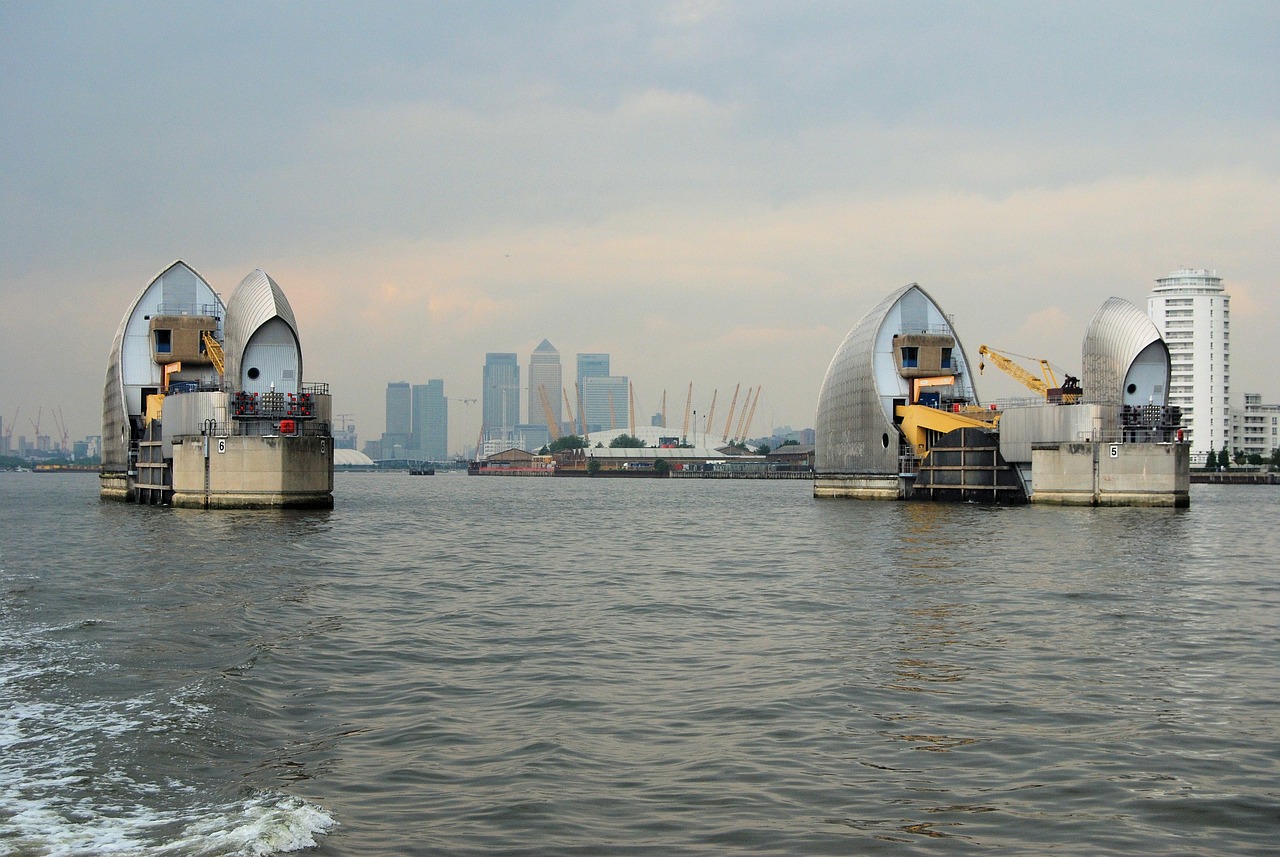The Thames Barrier is one of the UK’s greatest engineering achievements, as climate change intensifies, its design shows the value of resilience.

The Thames Barrier is one of the most iconic engineering achievements in the UK. Since it became operational in 1982, this movable flood defence has protected London from more than 200 tidal surges, preventing devastation to homes, transport networks, and critical infrastructure.
As climate change and rising sea levels place increasing pressure on flood defence systems, the Thames Barrier stands as both a remarkable achievement and a case study in long-term engineering resilience. For engineers, it offers valuable lessons in design foresight, professional responsibility, and the ongoing importance of competence and standards in practice.
Why London Needed the Thames Barrier
London is built on the tidal Thames, making it vulnerable to storm surges from the North Sea. The floods of 1953 demonstrated the scale of the risk, when coastal areas in the UK and northern Europe were overwhelmed, leading to loss of life and extensive damage.
The need for a robust solution became urgent, and planning for a flood defence system began in the 1960s. By 1974, work on the Thames Barrier was underway, with engineers tackling some of the most complex civil and mechanical design challenges of the era.
Thames Barrier Design: How It Works
Spanning 520 metres across the Thames at Woolwich, the barrier consists of ten steel gates supported by massive concrete piers. Each gate is over 20 metres high and weighs around 3,300 tonnes.
In normal conditions, the gates lie flat on the riverbed, allowing ships to pass freely. When a tidal surge threatens, hydraulic machinery rotates the gates upward into position. Depending on the scenario, the barrier can be raised fully to form a wall against the surge or partially adjusted to regulate flow.
This design flexibility remains critical to London’s flood defence strategy. Unlike static barriers, the Thames Barrier is dynamic, able to adapt to changing tidal and river conditions.
Key engineering features include:
- Radial arm systems capable of lifting and lowering colossal gates repeatedly with precision.
- Hydraulic drives that ensure smooth and reliable movement.
- Control systems that allow real-time monitoring of tides and river levels.
- Redundancy in design, providing backup systems to guarantee operation when required.
Engineering Challenges During Construction
Building the Thames Barrier was no small task. Engineers had to secure stable foundations in the soft riverbed while accounting for the powerful tidal currents of the Thames. They also faced the challenge of designing and manufacturing machinery precise enough to move gates weighing more than 3,000 tonnes, not just once but repeatedly over decades of operation.
Reliability was critical; the barrier needed to function under pressure with minimal downtime, so resilience and redundancy were built into every part of the system. Alongside these mechanical and civil demands, engineers integrated monitoring and forecasting technology, enabling the barrier to respond effectively to changing tidal and weather patterns.
The success of this integration showed how essential it is for disciplines to work together in delivering infrastructure that is both robust and adaptable.
The Thames Barrier in Operation
Since opening, the Thames Barrier has been raised more than 200 times to protect London. Its effectiveness has been proven time and again, preventing billions of pounds in potential damage.
The barrier is tested and maintained regularly, with inspection and servicing forming a vital part of its long-term performance. Engineers ensure not only that the gates function correctly but that supporting systems, hydraulics, electrics, and monitoring equipment are kept to exacting standards.
For today’s engineers, the barrier is a reminder that design is only one part of the equation. Professional responsibility extends to operation, maintenance, and lifecycle management, ensuring systems continue to deliver their intended purpose.
Lessons for Modern Engineers
Studying the Thames Barrier provides several takeaways that remain relevant across all sectors of engineering:
- Design for resilience: The barrier was designed with flexibility and longevity in mind, capable of dealing with conditions beyond its initial design life.
- Maintenance as a discipline: Regular inspections, testing, and servicing ensure continued reliability, highlighting the importance of robust maintenance strategies.
- Interdisciplinary collaboration: Success required the expertise of civil, structural, mechanical, and environmental engineers, working towards a common goal.
- Future-proofing: Climate change is a growing factor in infrastructure design, making foresight and adaptability essential qualities in any project.
These principles align closely with the standards expected of professionally registered engineers, who commit to demonstrating competence, accountability, and ongoing development.
Build Your Future with SOE
Engineers achieve their best when technical expertise is matched with professional recognition and ongoing development. At the Society of Operations Engineers (SOE), we provide the knowledge, support, and community that help you excel in your career.

